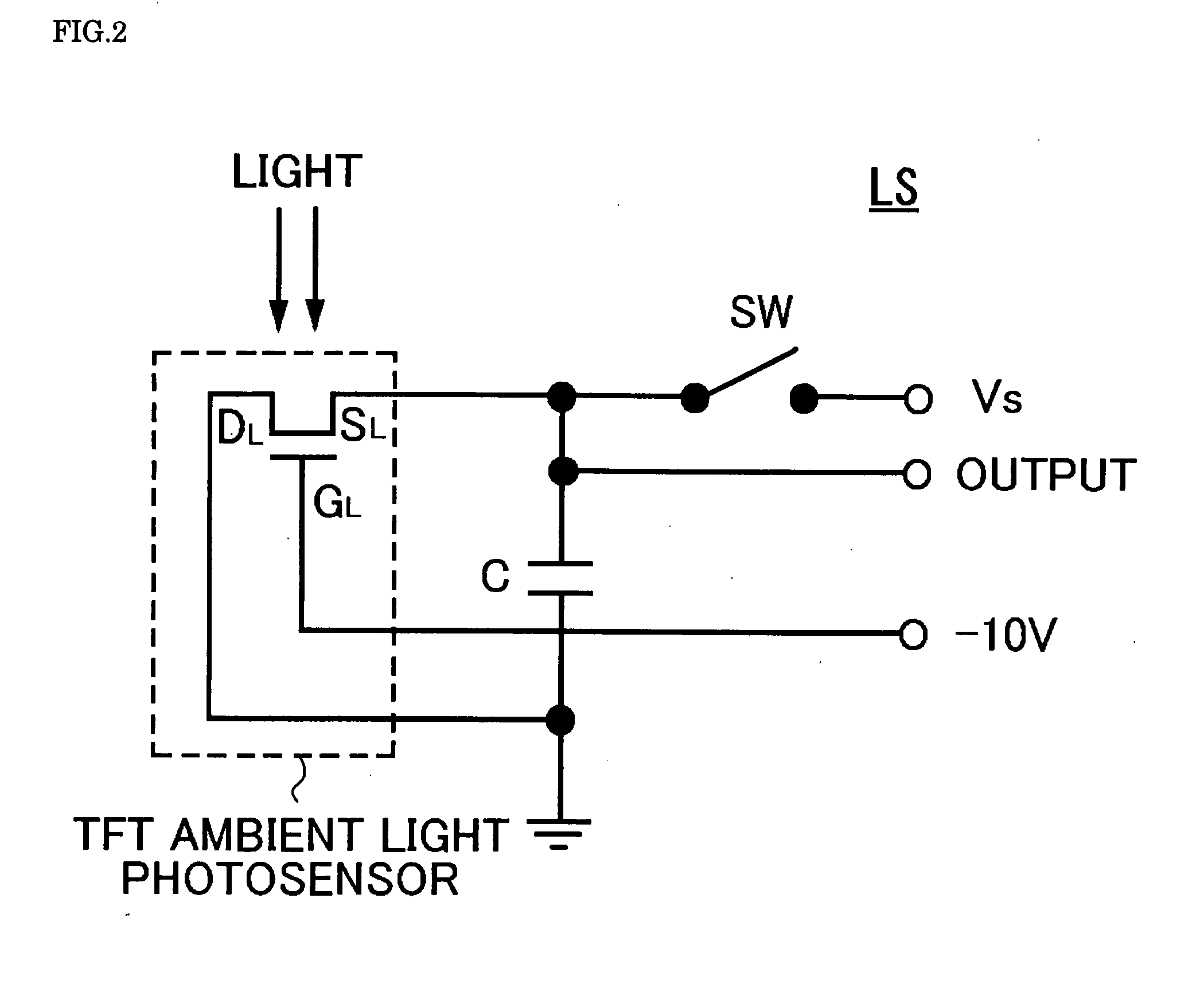Liquid crystal display
a liquid crystal display and display technology, applied in the field of liquid crystal display, can solve the problems of poor display visibility in a dark room, unnecessarily turning on the backlights of end users, and quick drain of battery in cellular phones and other mobile appliances, so as to reduce sensitivity, prevent malfunction, and simple structure
- Summary
- Abstract
- Description
- Claims
- Application Information
AI Technical Summary
Benefits of technology
Problems solved by technology
Method used
Image
Examples
first embodiment
[0038]Referring to FIGS. 1 through 3, the known operation principle of a TFT as an ambient light photosensor (hereinafter referred to as the “TFT ambient light photosensor”) and a driving circuit therefor will be described. FIG. 1 shows an example of the voltage-current curve of the TFT ambient light photosensor. FIG. 2 is a circuit diagram of a photodetector unit using the TFT ambient light photosensor. FIG. 3 shows the voltage-time curve at both ends of a capacitor C included in the circuit diagram of FIG. 2 with different brightness levels. Like reference numerals in FIG. 2 designate like structural elements.
[0039]The TFT ambient light photosensor has practically the same structure as another TFT serving as a switching element for an active-matrix LCD panel. Referring to FIG. 1, an ultra-low dark current flows in the TFT ambient light photosensor in the gate-off state when it is light-shielded, and a leakage current increases depending on the intensity (brightness) of light shed ...
PUM
 Login to View More
Login to View More Abstract
Description
Claims
Application Information
 Login to View More
Login to View More - R&D
- Intellectual Property
- Life Sciences
- Materials
- Tech Scout
- Unparalleled Data Quality
- Higher Quality Content
- 60% Fewer Hallucinations
Browse by: Latest US Patents, China's latest patents, Technical Efficacy Thesaurus, Application Domain, Technology Topic, Popular Technical Reports.
© 2025 PatSnap. All rights reserved.Legal|Privacy policy|Modern Slavery Act Transparency Statement|Sitemap|About US| Contact US: help@patsnap.com



